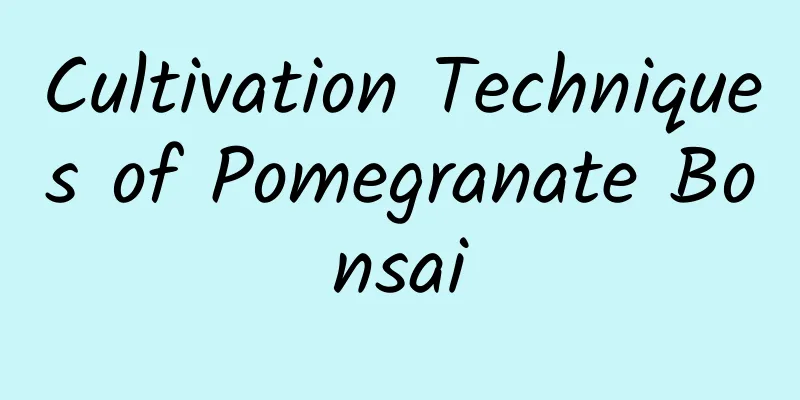Cultivation Techniques of Pomegranate Bonsai

How to make a pomegranate bonsai1. When choosing a pomegranate tree for making a pomegranate bonsai, it is better to choose a small pomegranate tree because the height is fixed and the branches will naturally become thicker through strengthened management. 2. Plant the pomegranate tree in an ornamental pot of suitable size in early spring. Apply proper fertilizer during cultivation to promote the growth of the tree. The formed pomegranate pot needs several years of cultivation and pruning to shape it. Cultivation Techniques of Pomegranate Bonsai1. When the pomegranate bonsai grows to a certain height, it can be shaped manually. Its trunk can be upright, curved, or inclined. The design should have a natural and smooth shape. 2. Before shaping the trunk of the pomegranate bonsai, you must first allow the trunk to grow to the ideal thickness. After shaping, most of the nutrients will be dispersed on the branches, and the thickness of the trunk will slowly decrease. 3. In spring and summer, pomegranate bonsai grows rapidly and needs to be fertilized once every fifteen days while meeting its water needs. During the growth process, apply more phosphorus fertilizer. 4. After the pomegranate bonsai has grown fruits, you can use the fruit thinning method to pick off the too dense fruits. This can avoid a large number of fruits consuming nutrients, hinder the main branches from becoming thicker, and make the fruits form a staggered shape. Precautions for cultivating pomegranate bonsaiPomegranate bonsai can be kept at home. Since ancient times, pomegranate has been given the beautiful meaning of many children and good fortune. If you want good luck, you can plant a pomegranate tree at home. 1. Use soil Pomegranate bonsai does not have high requirements for soil. It can adapt to sandy loam or loam, and can adapt to acidic or alkaline soil. Generally, garden soil, leaf mold, and sandy soil can be mixed in the same proportion. 2. Pruning It is best to prune the pomegranate bonsai during its dormant period, and be careful to cut off the branches that sprout from the roots and trunks. Pomegranates are resistant to pruning and can be pruned into the desired shape according to your preferences. 3. Repotting It is best to repot the pomegranate bonsai before the spring buds sprout, so that it can recover quickly after repotting. It is also good to repot in autumn, after the autumn leaves fall, but after repotting, you must pay attention to cold protection to avoid frostbite, otherwise it will affect the fruit setting in the second year. 4. Watering Pomegranate bonsai only needs to be watered once a day in summer and once a day in late autumn. The end of April to the beginning of June is the bud formation period of pomegranate, so watering should be reduced appropriately to keep the soil in the pot dry. |
>>: Do Hostas prefer shade or sun?
Recommend
How to grow four-leafed lily
1. Maintenance methods 1. Temperature: It has a s...
Jiaguobao planting conditions and regions
Jabuticaba Planting Conditions Jabuticaba prefers...
Tiger thorn breeding methods and precautions
1. Soil Its roots are not tolerant to waterloggin...
Tips for indoor placement of foliage plants
1. Matching of colors and styles When placing fol...
Which month is best for planting ice plants, the Gregorian calendar or the lunar calendar?
Iceweed, also known as African ice grass , ice fl...
Goose breeding technology and management
Goose is a kind of poultry that mainly feeds on g...
How to grow Staghorn Begonia
Cultivation method of Staghorn Begonia Staghorn B...
The language and meaning of lily
1. Flower Language The flower language of lily is...
Can lilies be grown in soil?
Can lilies be grown in soil? Lilies can be grown ...
Why are the leaves of velvet arrowroot burnt and curled?
Why does the velvet arrowroot have burnt edges an...
How many days does the upland rice growing period last?
After sowing, upland rice will seedlings in 8-10 ...
Can peacock arrowroot be planted in the bedroom?
Is the peacock plant suitable for indoor maintena...
Flowering period and maintenance of white palm
1. Flowering period The white calla lilies grown ...
How to sow and propagate air plants
Air plants pollination The flowers of air plants ...
When is the best time to plant ginkgo trees?
Before planting ginkgo trees, you first need to c...









